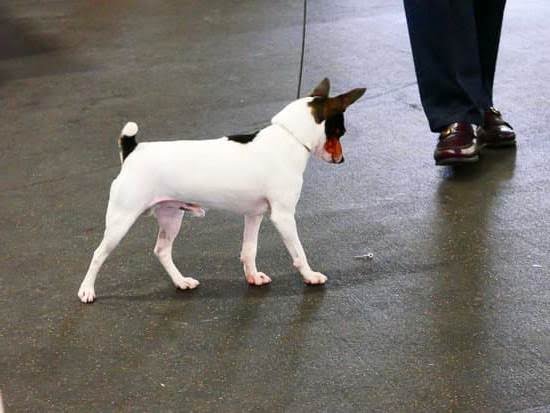Are you looking to teach your furry friend a new trick? If so, you may be wondering how to train your dog to lift his paw.
This adorable and endearing behavior is not only a fun trick to show off, but it can also strengthen the bond between you and your canine companion. In this article, we will delve into the psychology behind paw lifting, provide a step-by-step training guide, troubleshoot common challenges, and offer tips on incorporating voice commands and turning paw lifting into a fun game.
Understanding the psychology behind paw lifting is crucial in effectively training your dog. This behavior is not just cute; it also serves as a way for your pup to communicate with you. By recognizing the underlying reasons for why dogs lift their paws, you can tailor your training methods to ensure success. With the right tools and treats, along with patience and consistency, you can help your dog master this charming trick.
In this comprehensive guide, we will cover essential tools and treats needed for training, as well as an easy-to-follow step-by-step process for teaching your dog to lift his paw. Additionally, we will explore how to troubleshoot common challenges that may arise during training and discuss advanced techniques such as adding voice commands and incorporating paw lifting into fun games and activities.
So grab some treats, gather up your pup, and get ready to embark on an exciting journey of teaching him how to lift his paw.
Understanding the Psychology Behind Paw Lifting
One of the main reasons dogs lift their paws is to gain attention or ask for something. It can be a way of seeking interaction with their owners or indicating that they want to play. In some cases, paw lifting may also be a sign of submission or appeasement. Understanding these motivations can help you tailor your training approach and effectively communicate with your dog during the teaching process.
Another important aspect of the psychology behind paw lifting is the emotional state of the dog. Dogs may lift their paws when feeling anxious, uncertain, or stressed. This behavior can serve as a coping mechanism for them in certain situations.
When training your dog to lift his paw, it’s crucial to create a positive and encouraging environment to ensure that he associates this behavior with positive experiences rather than stress or anxiety. By recognizing the psychological factors at play, you can approach the training process with empathy and understanding, strengthening the bond between you and your furry friend.
Preparing for Training
Before starting the training process to teach your dog to lift his paw, it is important to gather the necessary tools and treats. These items will help make the training sessions more effective and enjoyable for both you and your furry friend. Here are some essential tools and treats to prepare before beginning your training:
- Clicker or verbal marker: A clicker or a specific word like “Yes.” can be used as a marker to indicate the exact moment when your dog performs the desired behavior.
- High-value treats: It’s important to have a supply of high-value treats on hand during training sessions. These treats should be irresistible to your dog and reserved specifically for training purposes.
- Leash and collar: While not always necessary, having a leash and collar on hand can provide extra control during training sessions, especially for dogs who may be easily distracted or overly excited.
- Treat pouch or bag: Keep your hands free during training by using a treat pouch or bag to conveniently store and access your dog’s rewards.
By having these essential tools and treats readily available, you can create a positive learning environment for your dog and set the stage for successful paw lifting training. With consistency, patience, and the right resources, you’ll be well-prepared to start teaching your dog this fun and impressive trick.
Step-by-Step Guide to Teaching Your Dog to Lift His Paw
Training your dog to lift his paw can be a fun and rewarding activity for both you and your furry friend. Here’s a step-by-step guide to help you teach your dog this impressive trick:
1. **Start with the Basics**: Begin by getting your dog into a comfortable sitting position. Hold a tasty treat in front of him, just out of reach, so he has to lift his paw to try and grab it. As soon as his paw comes off the ground, give him lots of praise and the treat.
2. **Repeat and Reinforce**: Practice this motion several times a day, being consistent with your commands and rewards. Eventually, your dog will start associating lifting his paw with receiving a treat and positive reinforcement.
3. **Introduce the Command**: Once your dog is consistently lifting his paw on cue, add a verbal command such as “shake” or “paw”. Say the command just before prompting him to lift his paw, so he begins to make the association between the spoken word and the action.
Remember that every dog learns at their own pace, so be patient and consistent with your training efforts. It’s important to keep training sessions short and enjoyable for your dog so that he stays engaged and motivated to learn this new trick.
Troubleshooting Common Challenges in Paw Lifting Training
Training your dog to lift his paw can be a fun and rewarding experience, but it can also come with its own set of challenges. One common issue that many dog owners face is getting their furry friends to understand the specific action of lifting their paw on command. This can often take time and patience, as not all dogs will pick up on this behavior right away.
One way to troubleshoot this challenge is by breaking down the training process into smaller, more manageable steps. For example, if your dog seems confused when you give the command to lift his paw, you can try physically guiding his paw up at first to help him understand what you’re asking for. Then gradually phase out the physical guidance as he begins to grasp the concept on his own.
Another common challenge in paw lifting training is maintaining your dog’s interest and motivation throughout the process. Some dogs may lose focus or become easily distracted during training sessions. To address this issue, try incorporating high-value treats or toys that your dog especially enjoys as a reward for successful paw lifts. You can also vary the training environment and timing to keep things fresh and interesting for your pup.
| Common Challenge | Troubleshooting Tip |
|---|---|
| Dog doesn’t understand command | Physically guide the paw at first, gradually phase out |
| Losing interest or becoming easily distracted | Incorporate high-value treats or toys as rewards and vary training environment |
Advanced Training
Adding voice commands to your dog’s paw lifting skills can take his training to the next level. Incorporating verbal cues not only enhances your dog’s ability to follow instructions, but it also strengthens the bond between you and your furry friend. It is important to remember that this advanced training requires patience, consistency, and positive reinforcement.
To start adding voice commands to paw lifting, choose a simple and distinct word or phrase such as “lift” or “shake.” Consistency is key – once you’ve chosen a command, stick with it. Use the same word or phrase every time you ask your dog to lift his paw. This will help him associate the vocal cue with the desired action.
When introducing the voice command, accompany it with a gentle physical prompt. You can lightly touch your dog’s leg or gently lift his paw as you give the verbal cue. Remember to praise and reward your dog when he lifts his paw in response to the new command. With repetition and positive reinforcement, your dog will learn to associate the voice command with the action of raising his paw.
Once your dog responds consistently to the new verbal cue, gradually reduce the physical prompts until he can lift his paw solely in response to the voice command. Progress at a pace that suits your dog’s learning style and be patient throughout this process. With dedication and practice, you will soon have a well-trained companion who can gracefully lift his paw on cue.
| Tip | Importance |
|---|---|
| Choose a simple and distinct word or phrase for the command | Consistency in using one command helps in training success |
| Gradually reduce physical prompts once your dog responds well to vocal cues | Patience is key for your pet’s understanding of new commands |
Incorporating Paw Lifting Into Fun Games and Activities
Once your dog has mastered the art of lifting his paw on command, it’s time to incorporate this fun trick into games and activities. Not only will this keep your dog engaged and mentally stimulated, but it also strengthens the bond between you and your furry friend.
Fetch With a Twist
Take the traditional game of fetch up a notch by incorporating paw lifting into the mix. Start by commanding your dog to “sit” or “stay.” Then, toss the ball or toy a short distance away. When your dog brings it back, ask him to “give paw” before handing over the toy again. This adds an extra level of challenge and engagement for your pup.
Agility Courses
If you’re looking for a more structured way to incorporate paw lifting into activities, consider setting up a simple agility course in your backyard or local park. Include obstacles such as tunnels, hurdles, and weaving poles, and at various points in the course, instruct your dog to lift his paw before continuing on.
Treasure Hunt
Create a scavenger hunt for your dog using treats or toys hidden around your home or yard. As he searches for each item, ask him to lift his paw before being rewarded with the treasure. This not only stimulates his natural hunting instincts but also enhances his ability to follow commands in different environments.
By incorporating paw lifting into these fun games and activities, you’ll not only keep training sessions enjoyable for your dog but also enhance his overall obedience and agility skills. Remember to always reward him for successfully completing these tasks as positive reinforcement is vital in maintaining his progress.
The Importance of Consistency and Patience in Training
Consistency Is Key
When training your dog to lift his paw, consistency is crucial for success. This means practicing the training exercises regularly and using the same commands and cues each time. Dogs thrive on routine and repetition, so by being consistent in your approach, you are helping your furry friend understand what is expected of him.
The Role of Patience
Patience is another important factor when it comes to training your dog to lift his paw. Every dog learns at their own pace, so it’s essential to remain patient and understanding throughout the process. Some dogs may pick up the training quickly, while others may take more time to grasp the concept. It’s important not to rush or become frustrated, as this can hinder your dog’s progress.
Rewarding Progress
In addition to consistency and patience, rewarding your dog’s progress is an effective way to encourage him to continue lifting his paw. Whether it’s through verbal praise or tasty treats, positive reinforcement plays a significant role in training success. By consistently rewarding your dog for lifting his paw, you are reinforcing the behavior and increasing the likelihood of him repeating it in the future. Celebrate even small victories as they indicate progress in your dog’s learning journey.
Celebrating Success
In conclusion, training your dog to lift his paw can be a rewarding and enjoyable experience for both you and your furry friend. Celebrating your dog’s success and progress is an important part of the training process. Recognizing and rewarding your dog’s efforts will not only reinforce the behavior but also strengthen the bond between you and your pet.
When celebrating your dog’s success, it’s important to use positive reinforcement such as treats, praise, and even a favorite toy. This will help to communicate to your dog that he has done something right and that he will be rewarded for his good behavior. Consistency in rewarding your dog’s progress will also encourage him to continue lifting his paw on command.
Remember that every dog is different, so it’s important to celebrate even the smallest steps of progress. Whether it’s a slight movement of the paw or holding it up for a few seconds longer than before, showing enthusiasm and encouragement will motivate your dog to keep trying.
The key is patience and understanding as you work with your pet to achieve this fun trick together. Overall, celebrating success in training is not just about the end result, but also about acknowledging each step along the way towards achieving the desired behavior.
Frequently Asked Questions
How Do I Teach My Dog to Lift His Paws?
Teaching a dog to lift his paws can be achieved through positive reinforcement training. Start by gently touching your dog’s paw and then rewarding him with a treat when he raises it.
Repeat this process, gradually introducing the verbal command “lift” or “paws up” as you touch his paw. With consistent practice and rewards, your dog will learn to associate the command with lifting his paws.
How Do You Teach a Dog Paws Up?
To teach a dog to put their paws up, begin by guiding them with a hand signal or gesture onto an elevated surface like a small platform or step stool. Use treats to encourage them to place their paws on the surface and reward them for doing so.
As they become more comfortable with this action, introduce the verbal cue “paws up” while using the same hand signal or gesture to guide them. Through repetition and rewards, your dog will learn to respond to the command.
How Do You Train a Stubborn Dog Paw?
Training a stubborn dog to lift his paw requires patience and consistency. Start by choosing a high-value treat that your dog loves, and use it as a reward for any small effort of lifting his paw, even if it’s just a slight movement. Be sure not to force your dog’s paw up as this can cause resistance.
Instead, use positive reinforcement techniques such as treats and praise whenever he makes any progress in lifting his paw, no matter how small. Keep training sessions short but frequent to maintain your dog’s interest and motivation.

Welcome to the blog! I am a professional dog trainer and have been working with dogs for many years. In this blog, I will be discussing various topics related to dog training, including tips, tricks, and advice. I hope you find this information helpful and informative. Thanks for reading!





